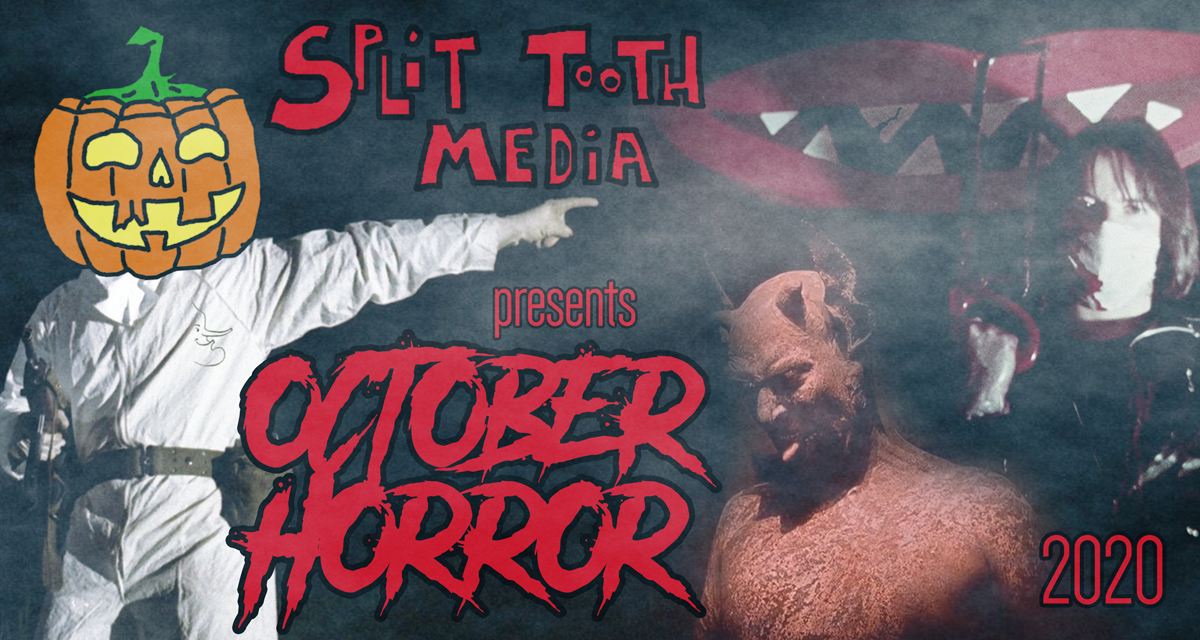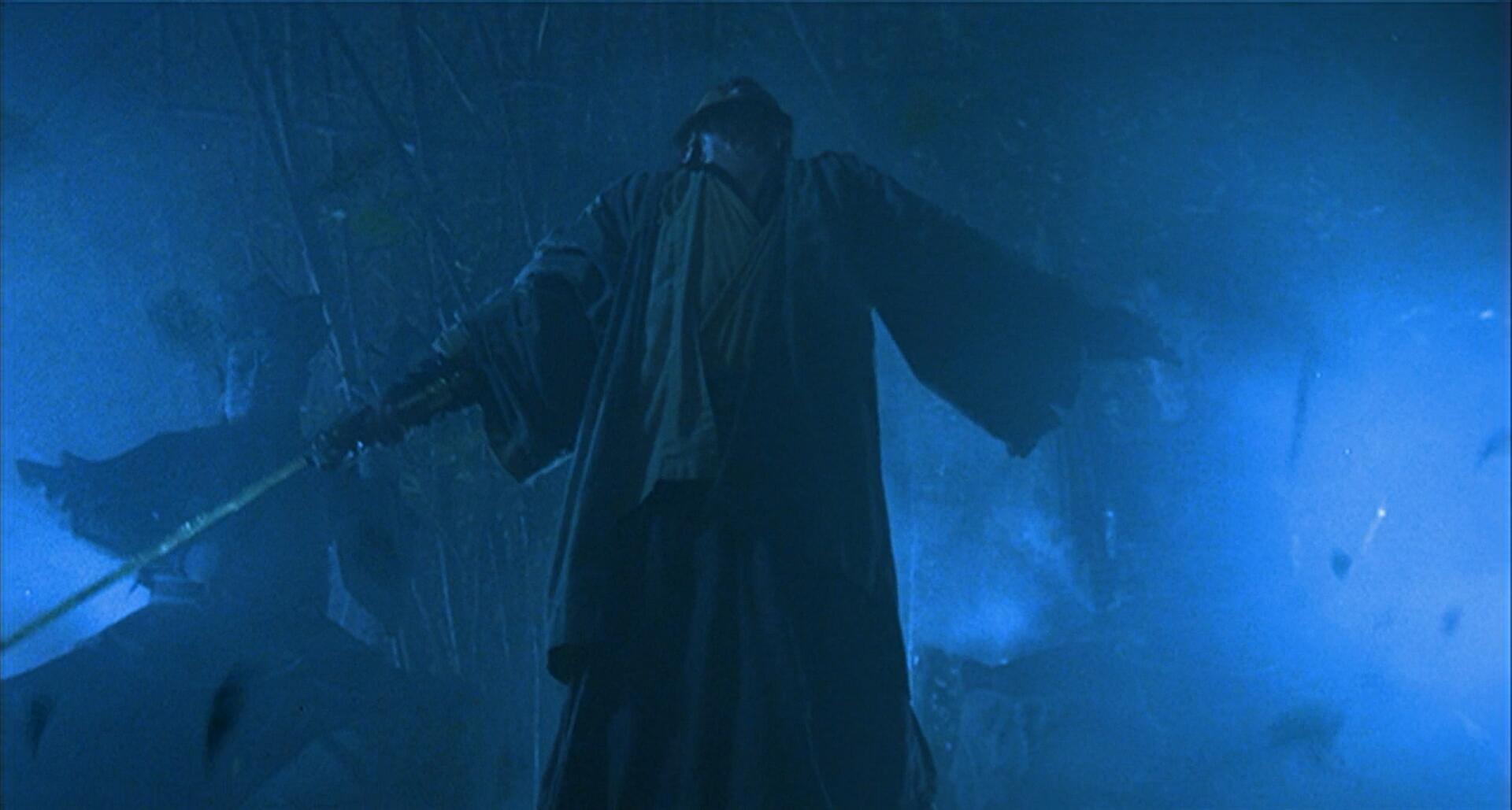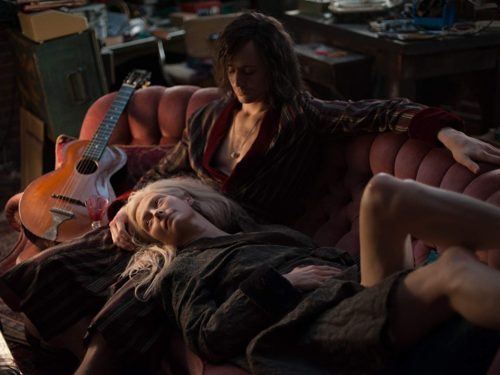The romantic-horror-comedy is often dismissed as a product of the ’80s, but A Chinese Ghost Story grapples with a complex way of the world
In A Chinese Ghost Story, the tension between the worlds of mortals and ghosts is presented as fact, like the wind and the rain. Director Ching Siu-Tung imagines life as an unceasing collision of opposing forces and the human efforts to make them accord through mastery of practice and by force of will. The film follows Ning Choi-San (Leslie Cheung), a hapless young debt collector sent to an unknown town. After getting caught in a torrent of rain, his account book is ruined, leaving him unable to collect money. Upon reaching his destination, Ning Choi-San seeks shelter at the Lan Yeuk Temple, a haunted and abandoned structure populated by reanimated skeletons and inhabited by a lone Taoist priest and swordsman, Yin Chek-Ha (Wu Ma). Ning Choi-San, during his first night at the temple, falls in love with Lip Siu-Sin (Joey Wong), who the swordsman warns him is a spirit. Yet Ning Choi-San’s love is profound and he becomes determined to free Lip Siu-Sin from the underworld and from her spiritual imprisonment by the Tree Demoness (Lau Siu-Ming), which results in a grand battle between the living and the dead.
Western critics have called the film derivative of The Evil Dead (1981) and many reviews comment on the film being “absolutely a product of the 1980s.” Efforts to narrow the film into a genre result in a clunky classification as a “romantic comedy horror film.” But when one avoids such categorical approaches, the film reveals itself to be more than just a goofy product of ’80s horror-comedy. A Chinese Ghost Story is exploring confrontations between man and nature and the influence they have upon each other. Each character and element of the film is dramatized to often comic extremes to heighten our attention to these relationships. The rain does not drizzle, it pours down in buckets, as when we are introduced to Ning Choi-San, who is helpless to the effects of nature that befall him and his shabby umbrella. The wind violently whips against the trees in the forest and ripples through the flowing robes worn by Lip Siu-Sin during her battle scenes. In town, the citizens all whisper in unison behind Ning Choi-San’s back when he announces his plans to sleep in the haunted temple, and the local police force is cartoonishly belligerent in their pursuit of anyone who even vaguely appears to be breaking the law.
With horror and genre films specifically, one expects to have certain expectations met. As A Chinese Ghost Story moves between an array of styles and tones, viewers may benefit from adopting a similar mindset to that of the swordsman, who takes nothing as obvious within the world of the film, and treats no question as unworthy of consideration. In a brief interaction with Ning Choi-San, we understand how the Taoist warrior approaches each moment with a keen awareness. After the bottom of his garments is torn off by demons, Ning Choi-San asks the swordsman, “Where is my bottom half?” Not knowing what the young man is referring to, he replies after brief consideration, “Attached to your top half.” While this line operates partly as comic relief, Yin Chek-Ha offers a way of responding to the world that gives all outside interaction full and serious attention. Even though Ning Choi-San is a clumsy younger guy, the swordsman treats his question as he would any serious matter. Similarly, the exaggerated elements of the film, which may be described as theatrical or comical merely for entertainment’s sake, allow the viewer to see more clearly the forces that dictate the relationships between all things living or dead. The Dao, or “The Way” as understood by westerners, is roughly translated as the path that each thing follows. The wind cannot embody its Dao without grappling or acknowledging the Dao of fabric. The confluence of these co-existing Dao results in an impactful flourish of white garment as it dances through the air. Similarly, the Dao of the Swordsman and the Dao of the Tree Demoness, or more generally, the Dao of the mortals and the Dao of the ghosts collide, resulting in fantastic battle scenes, pushing each character to the absolute limits of their abilities and the film itself to absurd climactic heights.
The film creates a necessity to approach each scene with a new energy appropriate to each moment as the film moves between horror, comedy, and romance. The Dao Rap, one of the film’s funniest and liveliest moments, goes so far as to move us into a highly stylized music video in the middle of the film. Yin Chek-Ha sings the rap seemingly drunk on his own song and dance, yet the performance also expresses the swordsman’s understanding of his place in the world. He exalts the Dao of heaven and earth, of man and his sword, and even the “Dao of the Dao itself.” The swordsman acknowledges the concurrent natural influences that inhabit his own path resolving to “find my own Dao” just as the natural elements embody their Dao. The scene is a dramatic tonal shift and seems to come out of nowhere. Yet the rap shows the swordsman practicing a wholehearted embrace and even celebration in his confrontation with the unknown. The swordsman provides the template for how fervent internal transformation can be the apt response to a constantly transforming environment.
A Chinese Ghost Story continually pushes its own limits of stylistic possibility. For example, one of the films’ final surprises comes in the form of an attack on the protagonists by a veiny, soaking wet tongue that might be 300 feet long. The temple’s moaning skeletons are pitiful in comparison. The sense of consequence and the absurdity of action are pushed to their extreme as the film grows increasingly absurd and violent. Yet A Chinese Ghost Story does rely often on more generic formulations of romanticism and action while still employing an ingenious form of filmmaking that refuses to settle into any one mode. For instance, the romantic scenes are highly idealized, as in the opening scene of Lip Siu-Sin seducing a writer and putting his hands under her robe while sappy music plays. Ching Siu-Tung provokes the viewer to leap with the film between modes of understanding in each scene, yet the emotions and ideas conveyed within many scenes come across as formulaic.The film’s reliance on popular conceptions of love, action, and humor detracts from the film’s energy and ingenuity of form.
Embodying one’s own Dao is not always a purely inward discovery that leads us to a new sense of self conception. Water is often used as an example of pure adaptability that we can use as humans to respond better to situations. In this way, the Dao of water does not point to what we should do, but how we might do it. The Dao is the form of our being, not the content. In this way it becomes a great tool to understand the form of A Chinese Ghost Story.
A Chinese Ghost Story seeks to expand our conceptions of existence by showing how we might actively respond to the forces of nature and humanity as we encounter them. Each human being has a unique path as each form of weather and life embodies its Dao in different ways. External forces of Dao, like that of water, provide an example of how we might create our own individual attitude or Dao, which accords with our surroundings. In each new scene of the film and in each new encounter in our own lives, there exists the potential to find new ways to engage with all change. Through his film, Ching Siu-Tung provides a template for the shrewd grappling one must commit to in every encounter with change itself. He offers a chance to encounter life and art indiscriminately, treating every event as worthy of our full and active attention. A Chinese Ghost Story asks us to celebrate the confluence of Dao rather than fight it, or if we must fight it, to fight wholeheartedly.
Find more October Horror 2020 here:

Follow Split Tooth Media to stay up to date with all things October Horror.
(Split Tooth may earn a commission from purchases made through affiliate links on our site.)




